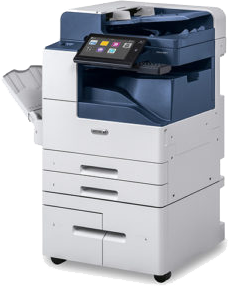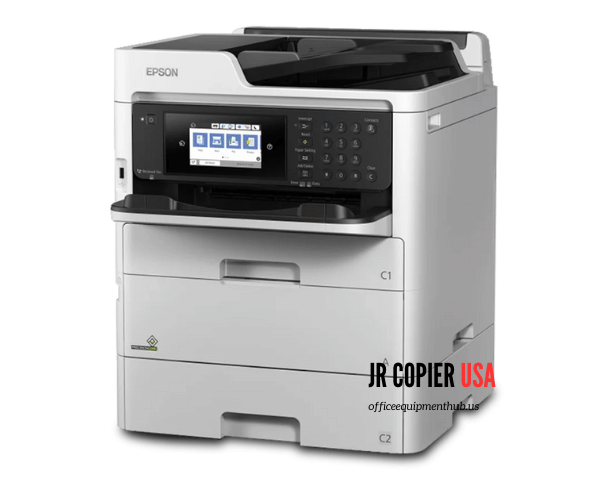Copier on a Lease Program
Getting a Copier on a Lease Program: A Comprehensive Guide
Businesses that require heavy printing and copying often face a dilemma – buy printers and copiers outright, which represents a major upfront capital expenditure, or lease them over time. Leasing office equipment like copiers has become an increasingly popular option for many organizations.
Leasing provides the benefits of getting the latest equipment while avoiding a large one-time purchase cost. Payments are made on a monthly basis, turning the cost into a predictable operating expense rather than major capital outlay. There are many advantages to leasing over buying copiers and printers.

Benefits of Leasing a Copier
Here are some of the top benefits of leasing instead of buying a copy machine or printer:
Lower Upfront Costs
With a lease, you avoid the large upfront expenditure of buying the equipment. Instead, you make regular monthly payments for use of the machine. This helps conserve working capital and liquidity.
Access to Newer Technology
Leases allow you to regularly upgrade to new equipment with the latest features and capabilities. This can be done as often as every 3-5 years. Buying printers ties you to older technology until the equipment is fully depreciated.
Predictable Budgeting
Leasing makes the cost a fixed operating expense that can be forecasted. This allows better financial planning compared to owning printers and dealing with repair and maintenance costs.
Improved Efficiency
Newer printer and copier models are faster, more reliable, and have lower operating costs. This can save time and money through improved workflow.
Flexibility
Lease terms can align with business needs. At the end of the lease, you can upgrade, return, or buy the equipment based on requirements.
Convenience
Leasing includes maintenance and servicing as part of the contract. The leasing company handles any repairs needed.
Tax Advantages
Lease payments can qualify as a tax deductible operating expense. This creates potential tax savings compared to depreciation of an owned asset.
Drawbacks of Copier Leases
While leasing has many positives, there are also some potential downsides to consider:
Higher Long Term Costs
Cumulative lease payments over multiple years may end up costing more than buying the printer outright. However, you must factor in maintenance costs and depreciation for an owned asset.
Lack of Ownership
With leases, you will never own the equipment and have to return it at the end of the term. However, ownership comes with disposal responsibilities.
Limitations on Usage
Most lease agreements limit the volume of copies or prints per month. Exceeding those limits results in overage fees.
Lock In Period
Lease agreements commit you to using the equipment for the entire term, usually 3-5 years. This reduces flexibility compared to owning the printer.
Potential Penalties
You may face early termination or equipment return fees for not completing the full lease period. Make sure to review these costs when signing.
Supply Requirements
Many lease contracts require using OEM brand toner cartridges and supplies, which cost more than third party consumables.
Carefully weighing the pros and cons allows an informed decision about whether leasing or buying office equipment is the better choice.
Steps to Lease a Copier
If you decide that leasing makes sense for your business, here is an overview of the process:
1. Evaluate Printing Requirements
Analyze your monthly copying and printing volumes, workflow, and feature needs. This determines the ideal equipment capabilities and capacity required. Consider current and future growth projections.
2. Research Vendors
Search for reputable office equipment leasing companies in your region. Ask other businesses for referrals. Compare options from several providers.
3. Obtain Quotes
Have vendors evaluate your space and usage requirements. Request detailed lease quotes for different printer and copier models. Make sure quotes include all fees and conditions.
4. Review Contract Terms
Scrutinize the lease terms and conditions closely. Be aware of the length, monthly cost, overage rates, maintenance, supplies, termination clauses, and return conditions.
5. Choose Equipment and Vendor
Select the most beneficial lease option for an appropriate equipment model from a trusted, responsive vendor. Prioritize your needs and budget.
6. Finalize Agreement
Negotiate any desired changes to the lease agreement. Obtain approvals from stakeholders. Have legal counsel review the contract before signing.
7. Schedule Delivery and Setup
Work with the leasing provider to deliver and install the equipment. Ask about initial training and materials to get started.
8. Process Lease Payments
Pay monthly invoices on time. Stay on top of lease periods, renewal options, and budget forecasting. Have an exit strategy as the end of term approaches.
9. Manage Supplies and Maintenance
Follow lease requirements for toner and parts. Place service calls as needed. Keep copiers well maintained to avoid disruptions.
Leasing a copier requires more upfront research than buying, but the convenience and financial benefits often make it an attractive option for businesses with significant printing needs.
Key Lease Agreement Terms
It is critical to understand the key provisions in a copier lease agreement before signing:
- Lease Term – The duration of the lease, typically 3-5 years. Make sure it aligns with your expected usage period.
- Monthly Payment – The recurring amount due each month, along with any initial down payment. Verify taxes and fees are included.
- Usage Limits – The maximum number of copies or prints per month before overage charges. Pick a level above your current and expected usage.
- Maintenance & Repairs – Confirm whether service and parts are included. Understand response times for repair calls.
- Supplies & Toner – Check if OEM brand consumables are required. Factor in these ongoing costs.
- Insurance Requirements – Some leases mandate insuring the equipment. See if it overlaps with existing policies.
- Delivery & Installation – Make sure the lease covers these costs including deinstalling old equipment.
- Training – Find out if initial training on using the devices is part of the lease.
- Termination & Renewal Clauses – Understand any penalties for early cancellation and options to extend the lease or upgrade equipment.
Having a thorough awareness of these key lease provisions allows you to negotiate a favorable agreement and avoid surprises down the road. Be sure to analyze the fine print!
Steps for Successful Copier Leasing
Follow these best practices during and after signing a copier lease to maximize value and avoid issues:
1. DesignateEquipment Administrator
Assign an employee to be the primary contact for the leased copiers. They can coordinate maintenance, supply orders, and usage monitoring.
2. Track Print Volume
Use software or features in the equipment to monitor monthly print and copy volumes. Watch for spikes indicating wasteful use.
3. Purchase Approved Supplies
Only use manufacturer approved toner cartridges and parts to avoid violations and extra costs. Set up reoccurring supply deliveries.
4. Schedule Preventative Maintenance
Stay ahead of problems by having technicians perform inspections and servicing per vendor recommendations.
5. Train Employees
Ensure employees understand proper equipment operation, printing procedures, and how to resolve issues.
6. Update Print Policies
Implement rules on printing limits, color usage, personal jobs, paper conservation, etc. to reduce waste.
7. Monitor Lease Expiration
Diarize renewal and termination dates. Decide whether to extend lease or return equipment timely.
8. Test New Models
When renewing leases, bring in demo units from vendors to evaluate the latest technology.
9. Negotiate Upgrades
Leverage being an existing customer to negotiate lease renewals or upgraded machines.
Following best practices helps maximize the ROI of a copier lease by avoiding avoidable fees and expenses.
Transitioning from Purchasing to Leasing
For companies switching from buying printers to leasing:
Evaluate Existing Equipment
Assess the age, condition, and capabilities of current machines. This helps determine if replacement is needed versus continued use.
Plan Transition Timeline
Allow sufficient time to test new copiers, dismantle old ones, and train employees on different models to minimize productivity disruption.
Review Supply Inventory
Take stock of unused OEM and third party consumable inventory. Some may be transferable to new leased equipment.
Understand Depreciation Impact
Consider the tax and accounting effects from discontinuing depreciation on owned equipment in favor of leased assets.
Negotiate Buyouts
See if the leasing provider offers trade-in credit or buyouts of existing printer and copier inventory as part of the new agreement.
Standardize Models
Consolidate on one leased copier provider and select similar models for easier management and bulk supplies orders.
With planning, shifting to leasing copiers can be a smooth transition that provides immediate benefits over purchasing equipment.
Exit Strategy for End of Lease
As you approach the final months of a copier lease:
Reassess Needs
Evaluate if current equipment is still adequate in terms of functionality, capacity, and usage. Consider changes since the lease began.
Explore New Equipment
Research the latest printer and copier models and capabilities. Identify ones that may better meet revised needs.
Negotiate Renewal
Work with the leasing company to extend the term on existing or upgraded equipment at favorable rates.
Return Equipment
If terminating the lease, follow procedures to properly remove, pack and return old copiers per the agreement.
Buy Out Option
Ask about the cost to purchase your leased equipment if it still meets business requirements. Compare to newer lease proposals.
Switch Providers
Consider competitively bidding the lease renewal with other vendors to get the best market rates.
With some foresight, you can smoothly transition to a new lease, buy out existing hardware, or terminate an agreement without disruption.
Key Takeaways
Here are the major points to remember when leasing a copy machine:
- Leasing often provides financial, operational and tax advantages compared to buying
- Conduct detailed needs analysis and get quotes from multiple vendors
- Carefully review all lease terms and negotiate changes before signing
- Manage usage volume, supplies, maintenance to avoid excess fees
- Have a transition plan as the lease expiry approaches
Following this guide will help maximize the benefits of leasing and avoid pitfalls. Leasing enables more flexible access to the latest equipment innovations while managing printing as an operating expense rather than major capital investment.

